Scala's legacy
Posted by Huw,
If you've been reading the articles about Scala sets that we've been publishing recently you could be excused for thinking that they consisted of nothing other than long-extinct unique and specialised parts, and you'd be mostly right.
However, the theme did introduce some that are still current and ubiquitous. Before Scala, LEGO figures had to sustain themselves on baguettes and pizza, but that was all set to change...
The first specialised food piece was the baguette, introduced in 1982 in Fabuland sets. In 1994 the printed pizza tile appeared, and a year later the ice cream scoops piece surfaced in Belville sets. And that was it. Bread, pizza and ice-cream. No wonder minifigs have wide waistlines...
Scala was responsible for introducing a varied and healthy diet, and perhaps helps explain why food pieces are way too big for minifigs.
The turkey and drumsticks were made for 3243 Kitchen in 1997. The humble sausage also appeared in that set, and in the dog's bowl in 3110 Four Animal Friends. Nowadays the sausage turns up everywhere, often as a way to connect things at an angle or to add decorative flourishes.
Apples first appeared in Scala and Belville sets in green and bright green in 1997, and then in red in 1999.
The banana was part of 3205 Julie's Picnic Lunch in 1998 and is now produced in some distinctly inedible colours, including teal and dark blue in this year's Chinese Traditional Festival sets. An early use in a non-edible colour was in 4767 Harry and the Hungarian Horntail, where tan ones were used for the beast's claws.
Julie's lunch also contained red cherries for the first time, too.
That set was also responsible for introducing yet another part that is now commonplace and used in non-edible settings: the croissant.
The carrot and top were first used as horse food in 3143 Camping Trip and 3144 Horse Stable in 1999, and also in some Belville sets released the same year.
Their use was confined to Belville until 2008, when they could be found being sold in 10185 Green Grocer. Dark brown ones were common in Indiana Jones sets for some reason!
Orange and dark brown are the commonest colours but a reddish brown one appeared in 76070 Mighty Micros: Wonder Woman vs. Doomsday in 2017, as Doomsday's weapon.
The lollipop was also co-introduced by Scala and Belville sets, in 1998.
Apart from food elements, nothing much else survived. The perfume bottles made a comeback in 2007 in 5378 Hogwarts Castle but those, and the other parts below, have not been seen since.
The rather attractive flowerpot, design 33008, was produced in dark grey and used in 7191 X-wing Fighter in 2000 but, again, has not been seen since.
The 5x5 dish below, design 6942, was used as bowl and a lampshade in Scala sets and crops up from time to time, most recently in 75153 AT-ST Walker and 75154 TIE Striker in 2016.
The red 1x1 round rick with ball, design 33176, was used as a lightbulb and finial in Scala sets and was last seen in 2007, in 7994 LEGO City Harbour.
The white piece below, which BrickLink oddly calls a Scala vase 3x3 did not survive.
It's interesting to speculate whether the food elements would have been made without Scala and if so, whether they'd be closer to minifig scale. Probably not, given a suitably sized apple would be just a couple of millimetres in diameter!
This concludes my look back at Scala. It's been fun building the sets again. They are back in the loft now and will probably not see the light of day again until I have a granddaughter...
Znap next?
285 likes
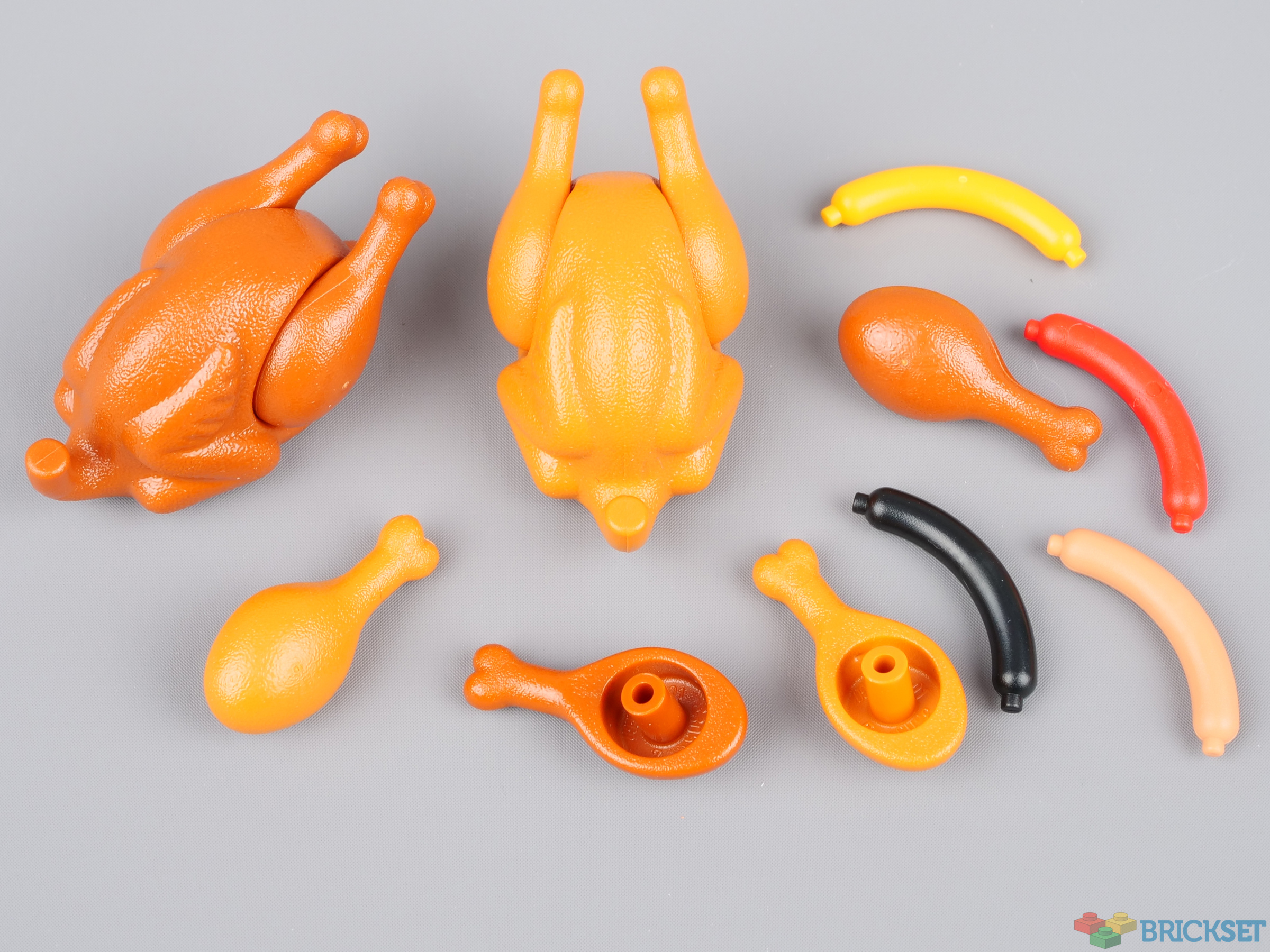
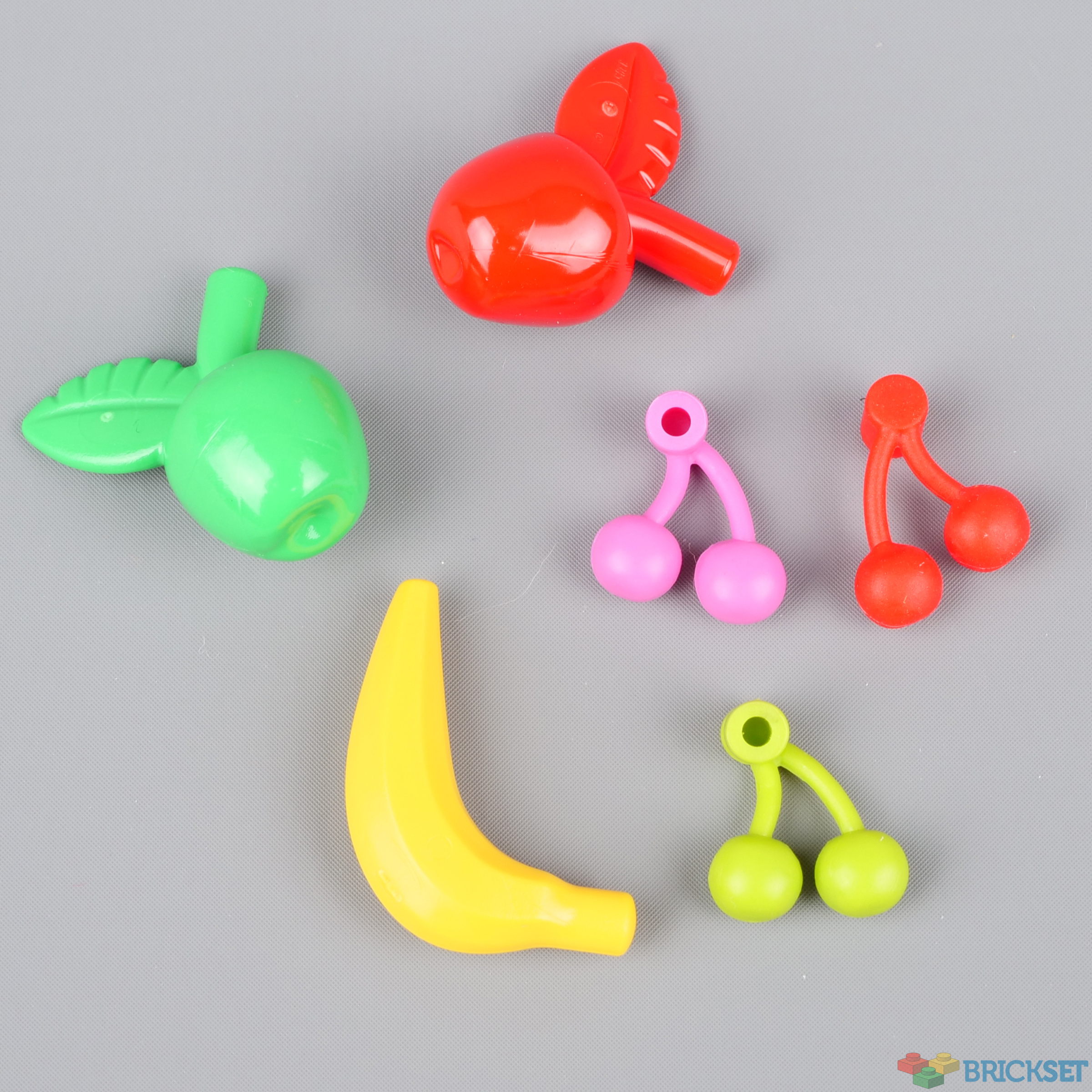
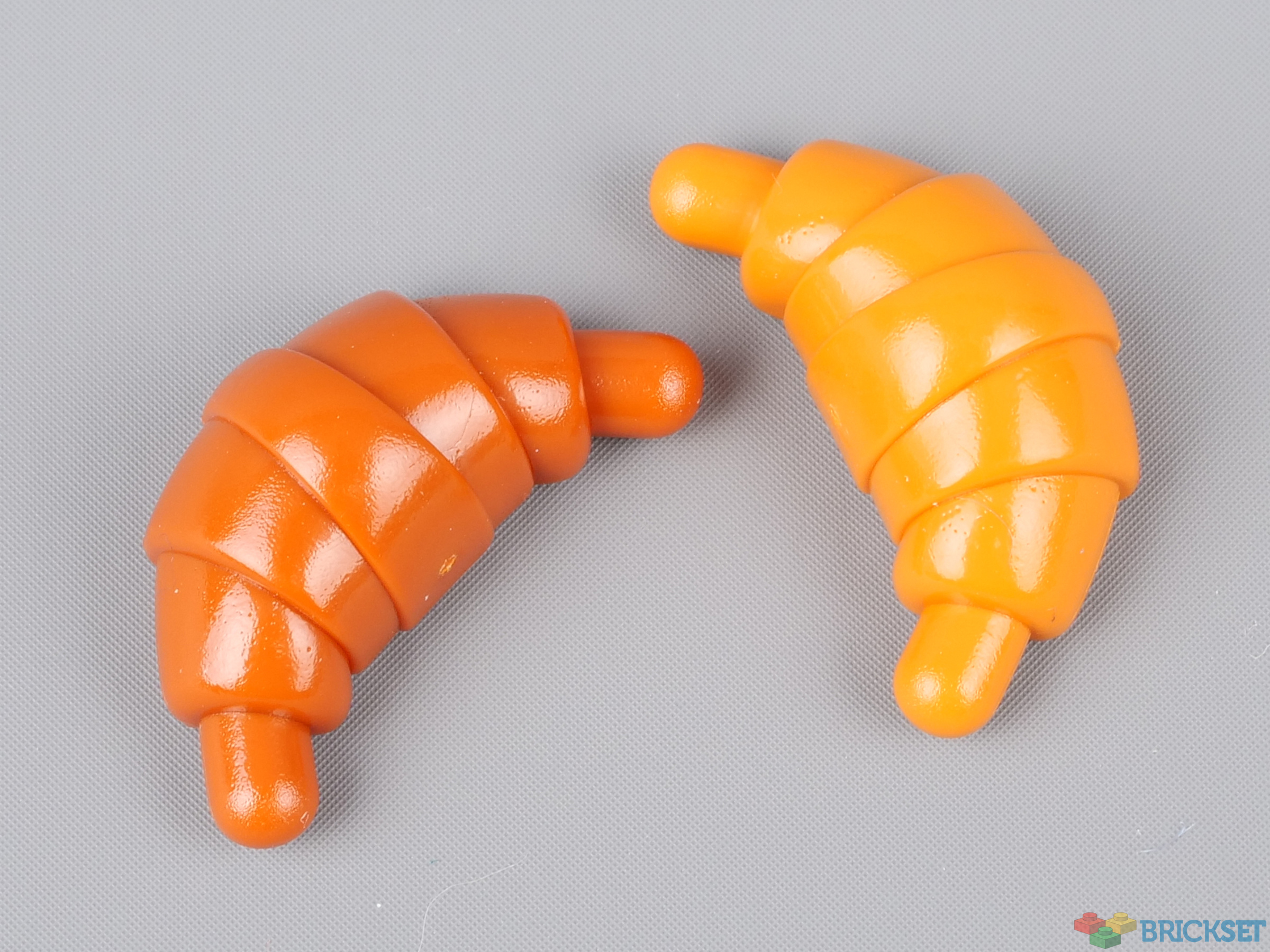
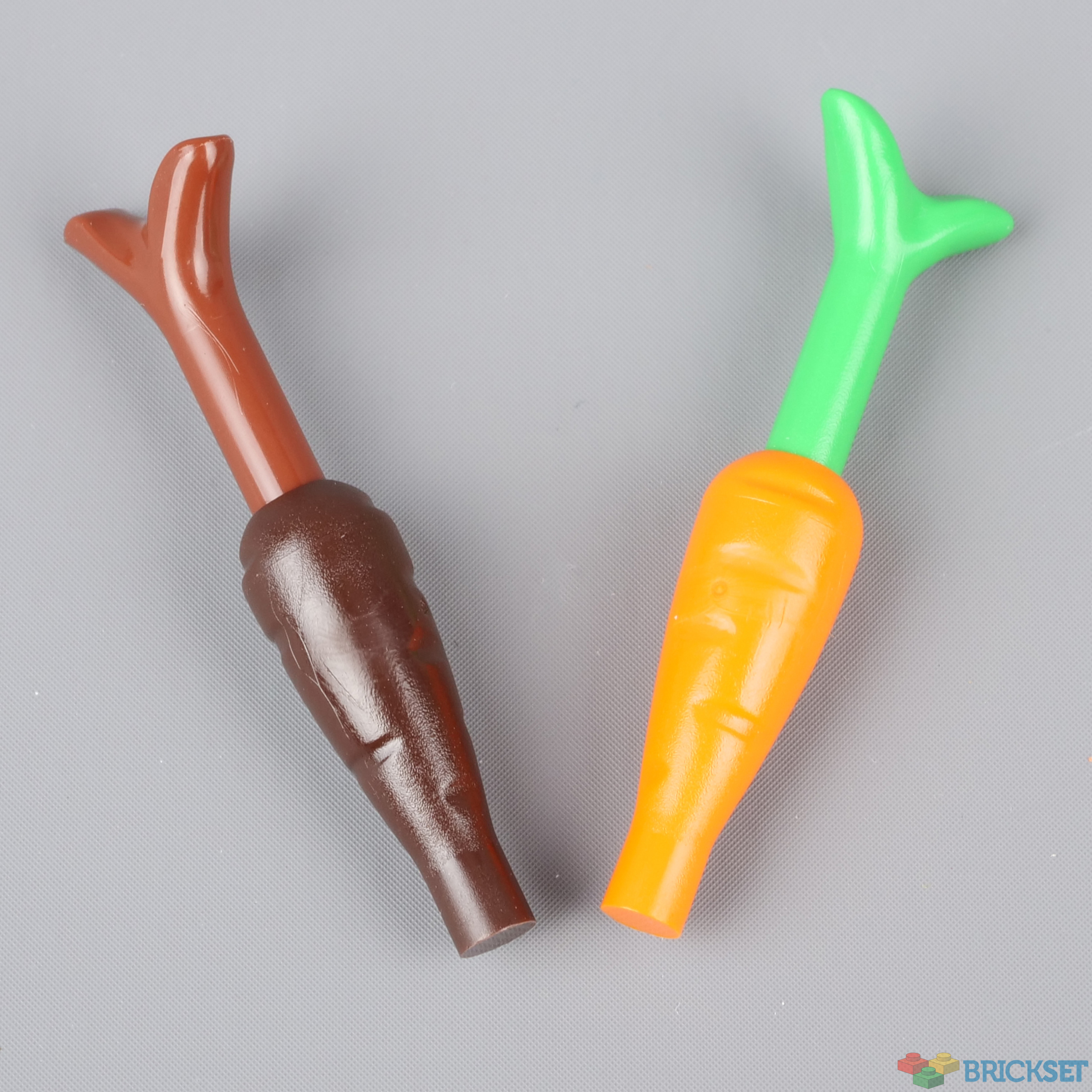
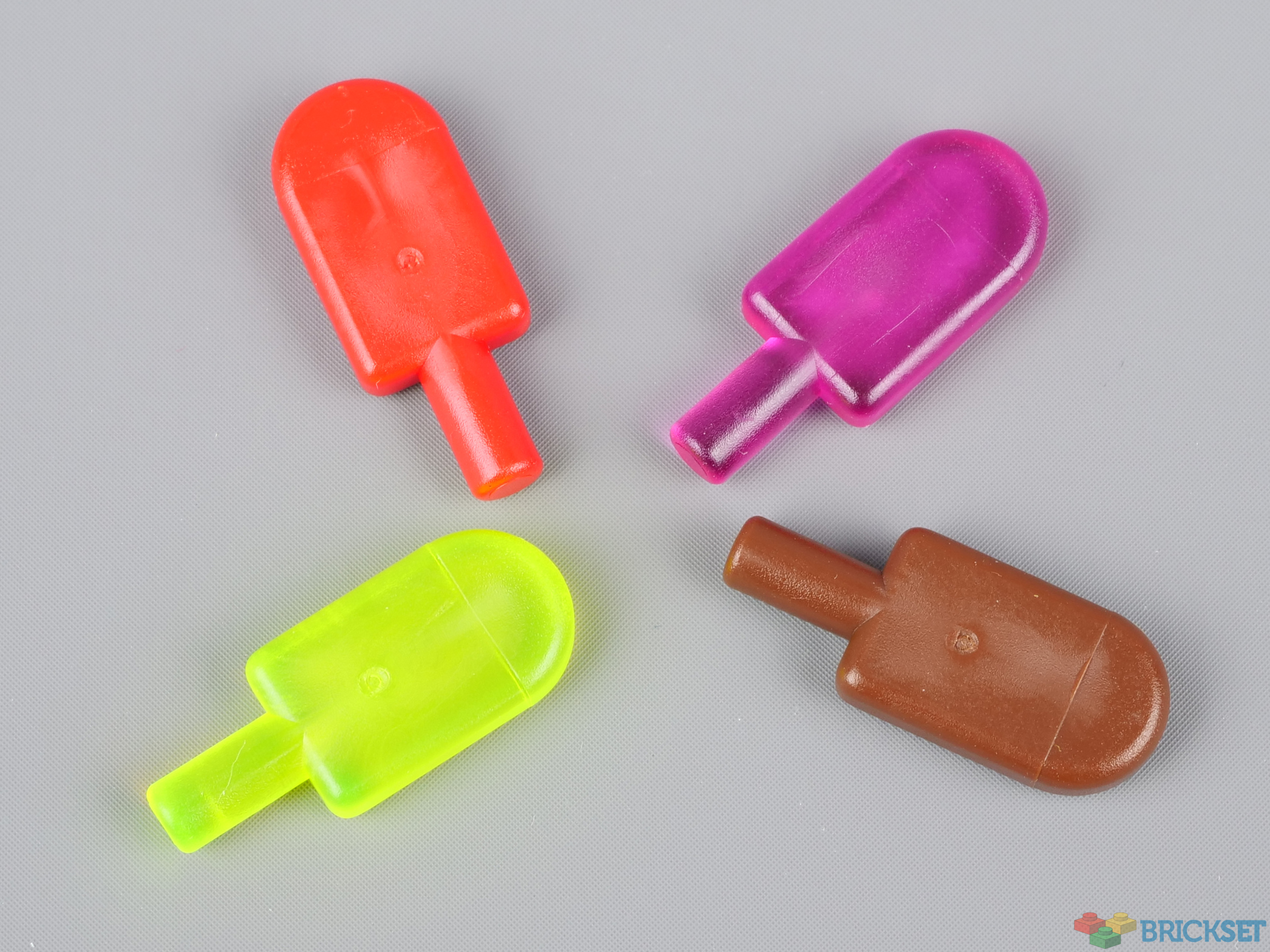
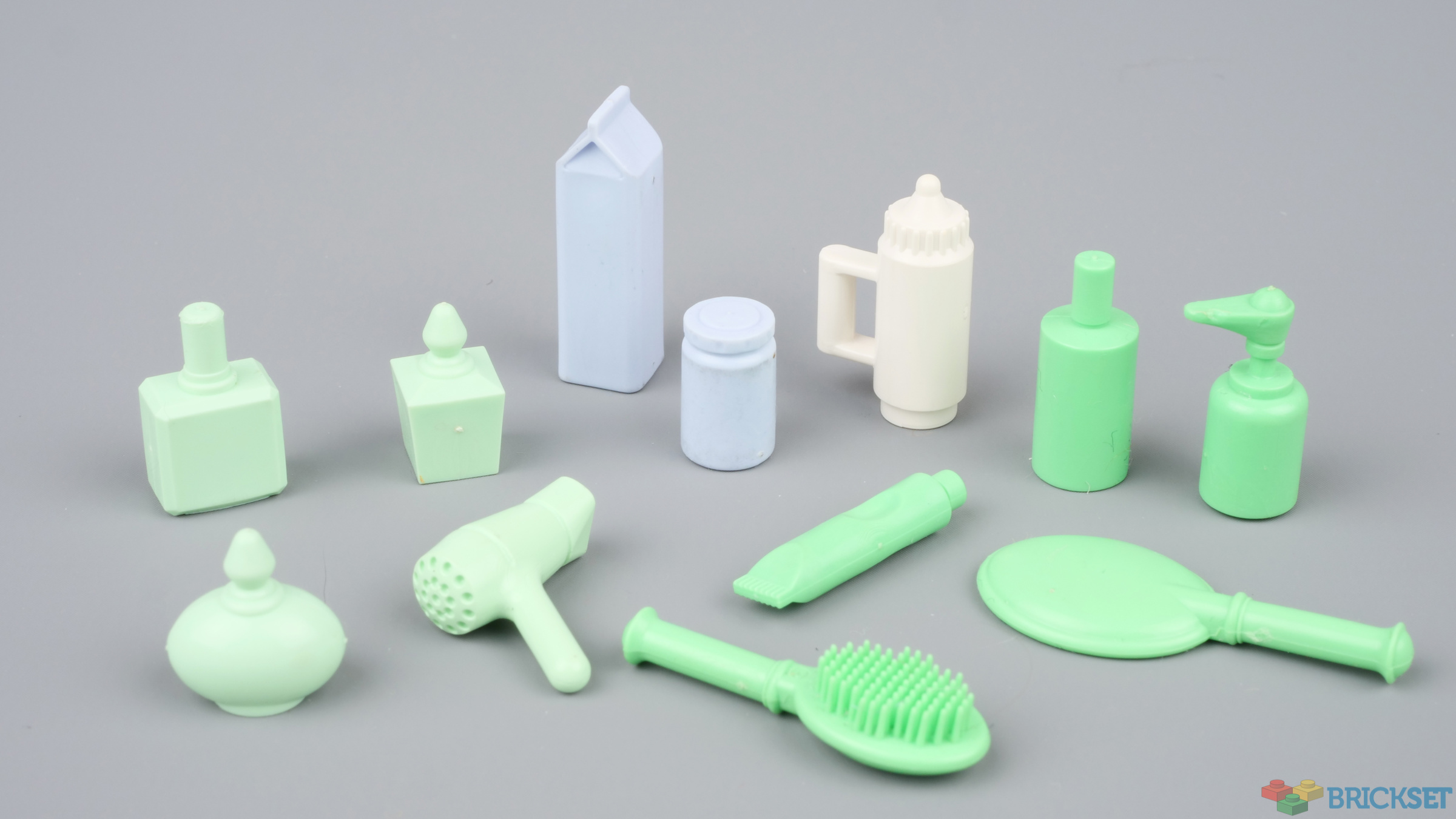
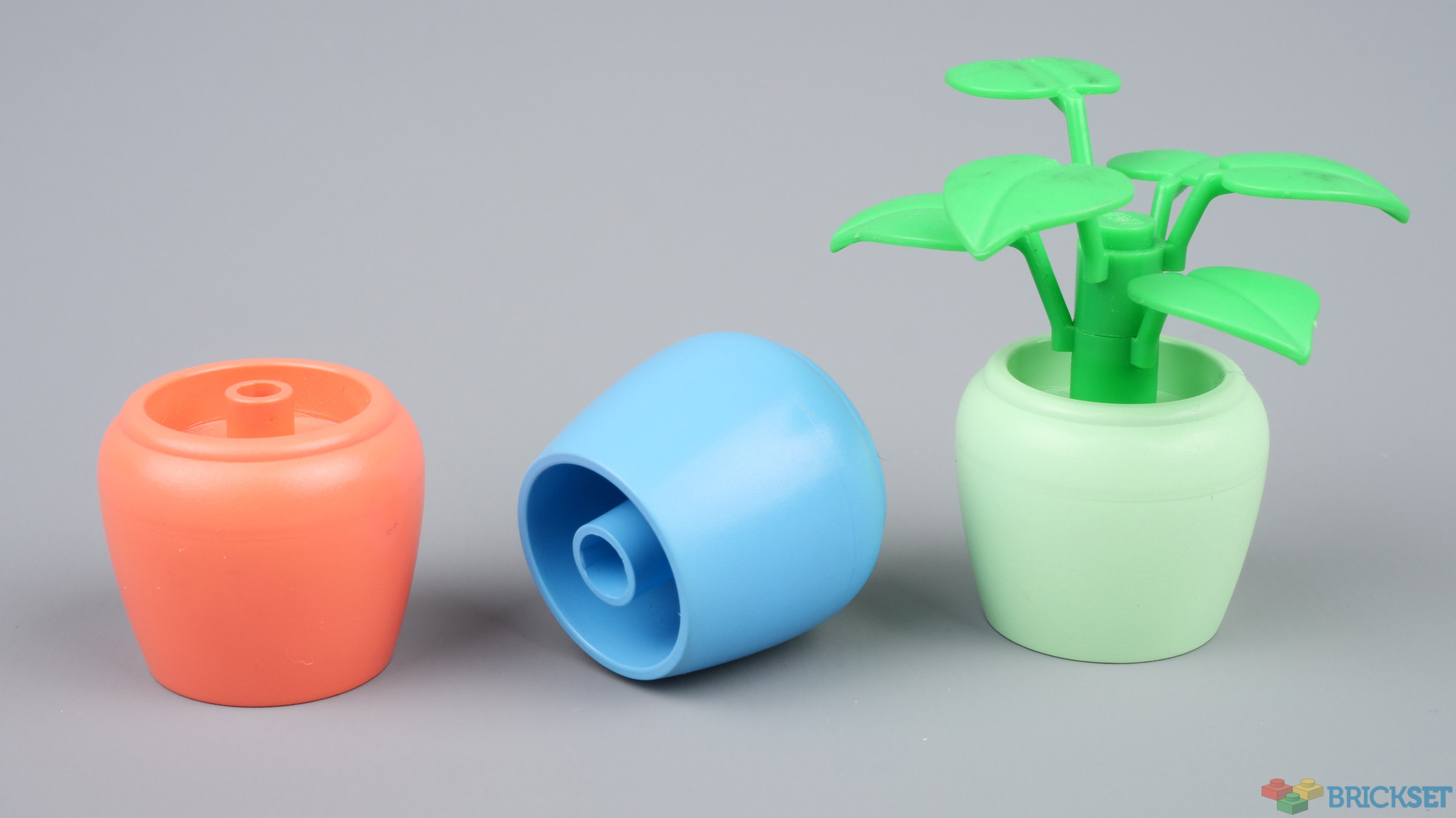
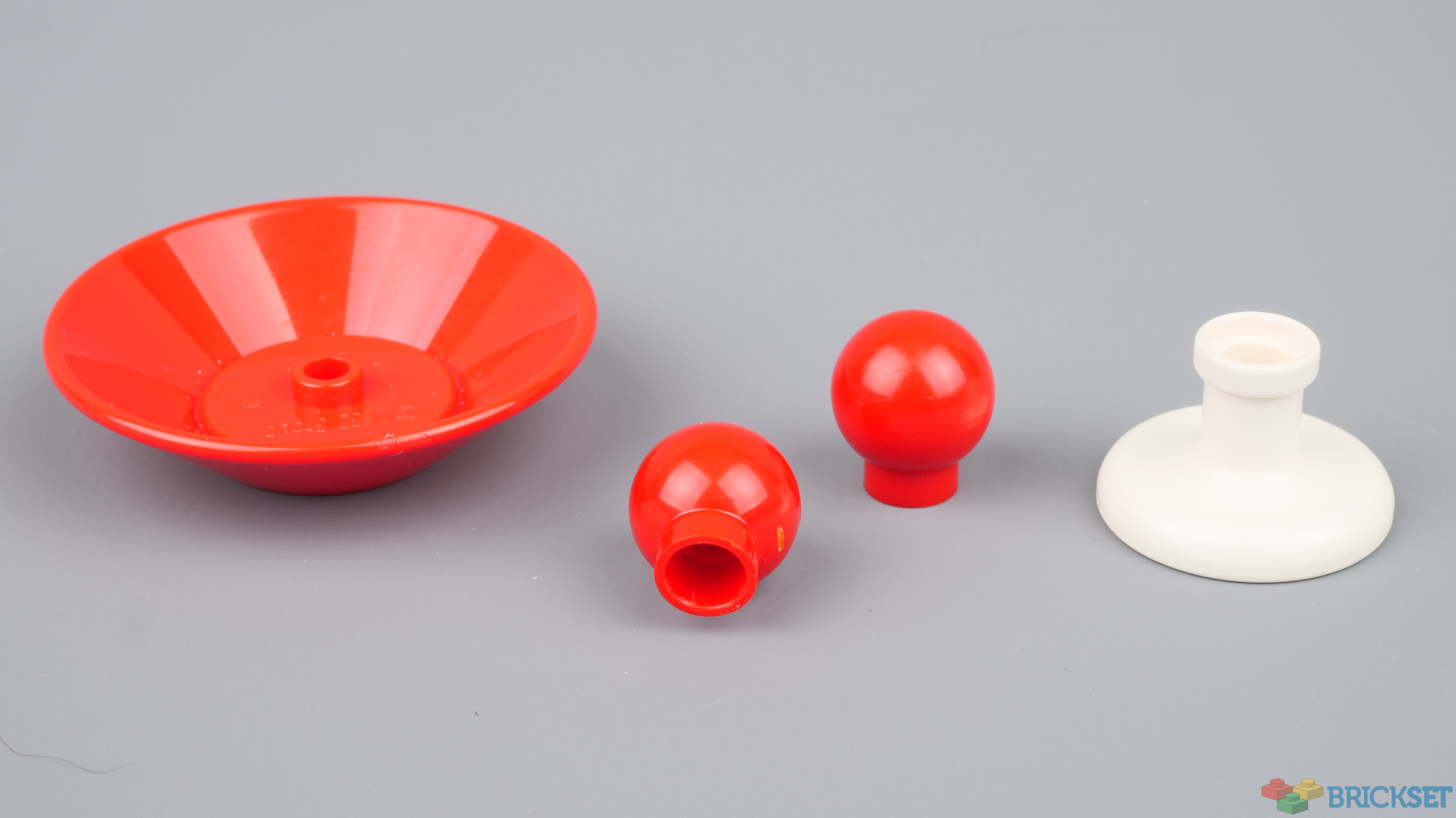
58 comments on this article
Great roundup!
Dark brown is closer to the 'natural' colour of carrots before humans began meddling with their hue.
I'd eat a teal banana.
Suprised you havent mentioned turkey leg got a UPDATE - With longer "bone". Minifigs can hold it easier now.
Funnily - it first appeared in series 1st CMFs (2010), while it had it propper debut in sets around... 2018!
@Huw the three bottles in the lightest green at the very left in the sixth picture came back in 3849 Orient Bazaar in 2010
I'm really liking these history articles, especially since you're not restricting yourself by looking at just 'System' or 'Technic' or other generic, more well-known themes.
I've often been in the midst of building a set and I'll come across a new piece that has interesting connection potential, or rebuilding an older set where I wish those newer pieces were available.
It makes me stop and think to myself "Who came up with this piece? Why did they feel they needed it? How come nobody had made it before? What was the design process behind it?"
I'd be interested to know where you learn all the history of these things.
Is there some kind of "part encyclopedia" that chronicles the creation of each part type that LEGO has come up with?
Has anyone ever thought to make something so hopelessly nerdy? Because I'd certainly buy one.
I still don't like the scala-range too much, but this article is wonderful. Amazing how all these foodpieces are still used in all kind of themes. I especially own sets with sausages, chickenwings, apples, carots and bananas. I had no idea they were designed for dolls!
"And that was it. Bread, pizza and ice-cream."
I feel personally attacked.
Thanks for this article series, they've been a lot of fun and I'm a bit sad to see them go! On to Znap!
@DigitalDevourer said:
"I'd be interested to know where you learn all the history of these things.
Is there some kind of "part encyclopedia" that chronicles the creation of each part type that LEGO has come up with?"
The data is at BrickLink: it just takes some digging to uncover it.
Thanks for these enlightened articles
Scala is a theme I'm happy was released because of all the food elements it introduced into the LEGO piece catalogue.
I've learned to be less critical of themes I didn't like because when the dust settles, they leave good stuff behind. In fact, I was really against the Friends line at all, because of the minidolls, but they are some of my favorite designs now and have added alot of detailed items to the community. I wish you could get equivalent minifigs as an option for Lego Friends. As it is, we have a small army of Olivias in my kids' collection, and they rarely get played with because she prefers minifigs too.
“ Znap next?”
If you’re serious, I would totally be down for more articles like this on older ‘weird’ themes.
This is the kind of article I've been waiting for New Elementary to write, the history of all those food pieces is very interesting indeed. Another very nice part introduced in Scala is Tap 1x2 with Dual Handles, Large/Sink Faucet https://www.bricklink.com/v2/catalog/catalogitem.page?P=6936&idColor=22 which was updated fairly recently.
There are some further parts that were introduced in Belville (maybe an article series about that too at some time?) that were also commonly used in Scala that are still around today, such as Plant Flower Stem 1x1x2/3 with 3 Large Leaves https://www.bricklink.com/v2/catalog/catalogitem.page?P=x8&idColor=36 and Utensil Dish 3x3 https://www.bricklink.com/v2/catalog/catalogitem.page?P=6256&idColor=1 .
Ah so now I know why baguettes inexplicably have no anti studs underneath, just the unpractical bar grip. For every headlight brick with it’s ingenious design there’s a baguette.
I always thought the baguette arrived with minecraft!
The carrot was reused in dark brown for the 2009 set 10193 Medieval Market Village, where it was officially featured in the set instructions as poop for the brown cows; perhaps the most odd use of a Scala food element.
The brown carrots in Indiana Jones were used as flaming torches, which is pretty much the only way the bar at the bottom makes sense. Looking at a minifigure holding a carrot the length of its head and torso from the tip makes you wonder what they put in the ABS!
My wife is not a lover of my Lego hobby (to say the least!) but if there is one aspect that makes her laugh out loud it is the scale of the food elements compared to minifigs - especially the turkey with the drumsticks attached......
Thanks for the series, Huw. The historical articles are always interesting, but this one was even more entertaining given the RSOTD beginnings and your family's connections to the theme!
"In 1994 the printed pizza tile appeared, and a year later the ice cream scoops piece surfaced in Belville sets."
Oh wow, really? I thought the ice cream piece was much newer than that, I didn't encounter it until 2010's 4841 Hogwarts Express! So weird to learn that certain pieces have been around much longer than previously realised.
Thanks, Huw, for this series of articles. Interesting look back at Scala and what elements we now have because of this theme. I will go back to BrickLink and see what Scala parts are up for sale. I always appreciate these type of 'historical' reviews and articles.
Had no idea there's a historical context to why some of the food elements are comically massive compared to the minifigs, certainly a welcome oddity.
Great text Huwbot! :) Very informative and fun to read
Love the pot element.
@huw
I found this article as well as the technic ones very interesting. Though I never bought any scala or znap sets it’s nice to learn more about the lesser known pieces and that’s coming from someone who has several millions lego pieces. I’m always amazed at the new ones they come out with every year. Keep waiting for a new real monorail! So looking forward to some znap reviews!
I appreciate that there are black, red, and yellow sausages.
Love these articles. The history behind the themes and pieces has always fascinated me.
I recently found out for example that LEGO once patented a 1x2 plate with studs on both sides in the early Eighties, but never actually used it in any set. Once the patent had expired in the early 2000s, MegaBloks used the parts design and has included it and similar variants in their sets to this day. Cobi and other alternative manufacturers also use this extremely useful piece, yet LEGO still doesn't, even though they invented it. Really strange.
Znap and other themes would be interesting.
That’s a lot of pieces I thought were fairly modern but are actually nearly as old as I am...
I was away from LEGO for a long time, so Znap is one of the (many) things I have never heard about. So, yes, more articles please!
Loved these articles - thank you, Huw
Odd that these food elements are oversized for minifigs, but undersized for Scala dolls. Wild.
@yuffie not necessarily. The Thorax Launcher still appears quite often in large cannons and guns. BIONICLE was also the theme that popularized the ball and socket system and while none of it's parts aside form the ankle/hand joint are still around it did lead to things like CCBS and Mixel joints that are still around today. And of course, we can't forget the Bohrok eye!
And of course, that's just parts-wise. The storytelling style of BIONICLE is still the go to for modern Big Bang themes, most notably Ninjago. While it wasn't the first to develop technicolor heroes that's still a pretty common trope for sci-fi LEGO themes.
They're nicely scaled for Brickheadz! Which makes it a shame they don't get included in those sets more often...
So, LEGO hasn’t had a famine since the start of Scala?
Interesting.
@Kynareth:
You've clearly never been to Alaska, which has set several records for oversized produce. They don't hold the record for heaviest or longest carrot, but when I was up there in 2019, we saw a 1:1 statue of what was once the largest head of cabbage ever grown, which was a few feet in diameter. Here's an article on the unique agricultural situation in the snowy north:
https://www.amusingplanet.com/2015/10/alaskas-giant-vegetables.html
And here's one that with images of the heaviest and longest carrots currently on record:
http://www.carrotmuseum.co.uk/record.html
For longest, the record-holder kinda cheated, since he created growing containers that were specially designed to grow for length, but all it really produces looks like a normal carrot with the world's longest strand of hair at the tip.
@Slave2lego:
I strapped one to the roof of one of my 6-wide minifig-scale cars, which always gets a laugh when I put it out around Christmas.
@ThatBionicleGuy:
You learn all sorts of things when you dig into the Known/Released Colors section of a parts catalog. Scala ice cream came in a lot of muted colors that have never been reproduced since.
@yuffie:
Scala got an earlier start, so there's no way for Bionicle to ever catch up. Still, you'd be surprised at the long-term impact Bionicle has had. The sheer volume of Bionicle sets that include one or more in 2002 suggests the friction Technic axle-pin was developed for that line. The two versions of the "voodoo ball" have stuck around as well, with the original one being used more as a decorative element (appearing in at least five different themes with painted deco), while the through-hole version is the single element that made the Ideas Voltron and Jurassic Park T-Rex models possible. CCBS was also developed for Bionicle, and has been used for large character builds in at least three other themes since then (one of which was specifically designed around that system).
@BrickRandom:
Znap was their moment of hypocrisy. They obtained the patent to the original Kiddicraft design so they could sue Tyco for coming out with an early "clone" brand, but then they completely ripped off K'Nex with their Znap line.
Interesting to see how many food pieces originated in Scala-- they're much more to-scale with the dolls than the Minifigures, as The LEGO Movie is quick to remind us ("giant sausages" comes to mind). There's only one image of 5378 Hogwarts Castle on here so I would've had no idea the fancy bottles are in that set, I only really remember them from LEGO catalog pictures of 3849 Orient Bazaar. Great article, as always!
Many of these pieces appeared in the LEGO games long after they were discontinued-- they still had the wine bottles in LEGO Pirates of the Caribbean (just mixed in with the new bottle piece) and I remember the flower pots being in LEGO Indy 2. I wouldn't be surprised if they're still using 33176 as lamps in the games, but the last time I remember one appearing was Harry Potter 5-7.
My favorite Scala food that never made it to other themes are the cakes. They look so ridiculous I just love them.
@GSR_MataNui:
There are still a couple Bionicle-original parts from that ball-and-socket system around, which I mentioned in my previous post. The system, however, was originally created for the Throwbots/Slizers theme, and popped up again to a limited degree in the Roboriders theme before an expansion of elements made it a lot more versatile in the Bionicle theme.
@Trigger_:
Yeah, Orient Bazaar is the only modern use of those bottles that I was familiar with. I didn't even start watching the HP movies until about half of them had been released, so I'd seen very little of what was in the third Hogwarts Castle, since there weren't a lot of sites that did extensive photo reviews of the sets back then. Orient Bazaar did come out three years later, but it's generally not classified as a "set", which makes it easy to get overlooked.
@PurpleDave said:
" @GSR_MataNui:
There are still a couple Bionicle-original parts from that ball-and-socket system around, which I mentioned in my previous post. The system, however, was originally created for the Throwbots/Slizers theme, and popped up again to a limited degree in the Roboriders theme before an expansion of elements made it a lot more versatile in the Bionicle theme.
"
Hence: "popularized" not "introduced"
If I could ask a question about one of the previous Scala articles: what set did the orange hoodie with a flower on it (in the article exploring the scala dolls, second picture) come from? Because I cannot find it on bricklink.
The article I was waiting for.
Thought there'd be more repurposed pieces.
How is the turkey piece meant to attach to other pieces? It doesn't seem to have traditional anti-studs. Does it just not connect since it was introduced in Scala? I have been wondering this for a while, since I got one in the 2019 Harry Potter Advent Calendar, and this seems like a good place to ask.
@GSR_MataNui:
But parts 32474 and 53585 _were_ introduced in Bionicle sets, and both continue to show up even today. 32474 just popped up again in 71738, and four different sets use 53585 so far this year.
@BonkersBricks:
It's really not. If it were meant to connect to the Scala flowers, it would also connect to a grid of studs. The only real connections on the turkey body are the two holes where the turkey legs plug in, and the bar grip on the neck. To keep it in place on the top of my car MOC, I put a pair of 1x2 panels back-to-back to set it over, and then use studded strings to hold down the neck and legs. It's an ugly solution, but the good news is the string needs to be there anyways to sell the look.
+1 for a Znaps series.
@Rimefang said:
"The carrot was reused in dark brown for the 2009 set 10193 Medieval Market Village, where it was officially featured in the set instructions as poop for the brown cows; perhaps the most odd use of a Scala food element. "
Wow, I thought that was a joke, but apparently it's true! It's on the page 70 of the instruction booklet for the set if anyone is curious about this rather bizarre appearance of a LEGO carrot.
@aztecwarrior said:
"The tan banana is a perfectly natural colors, and so are brown carrots. You will only find those in the wild probably, because farmers have messed with our healthy food a tad bit....."
There is no way anyone would enjoy eating a wild banana before humans selectively-bred them to be the delicious, pre-packed snacks they are today.
Farmers CREATED our healthy food.
(And sometimes bred them to be orange...)
Thanks for the articles. Loved reading them
@bananaworld said:
"
Great roundup!
Dark brown is closer to the 'natural' colour of carrots before humans began meddling with their hue.
I'd eat a teal banana."
And teal-ish bananas are actually a thing: https://www.google.com/amp/s/www.atlasobscura.com/articles/how-many-kinds-bananas-are-there.amp
@bananaworld:
They still taste like bananas, unfortunately. But you can't even eat plantains without cooking them first. Several plants that we consume today were at least partially toxic before they were bred for human consumption. You can see evidence of that today in foods like corn, for which there are varieties that are "fit for human consumption", and there are varieties that are restricted to use as livestock feed because we'd have trouble digesting it.
@PurpleDave said:
" @bananaworld:
They still taste like bananas, unfortunately. But you can't even eat plantains without cooking them first. "
Funnily enough you actually *can*, they just take so long to ripen far enough that they tend to start to grow mold first.
Another part that escaped Scala was a grey pillar that showed up in a Life on Mars set in 2001. 7313
znap? I can't think of any surviving znap thing. But sure proof me wrong.
^ One piece only. I'll be writing about Znap at the weekend, so stay tuned to find out what it is!
@Huw:
Heh. I just figured it out. Took looking through about 5.5 inventories before I could stop.
Speaking about oversized minifig accessories, I've always wondered about the origin of the phone handset used in the new modular 10278 Police Station etc. Shows that it too was designed for much larger figures - it first appeared in Belville in 1994, in sets 5880 and 5890. The phone base was a printed 3x3 slope: https://www.bricklink.com/v2/catalog/catalogitem.page?P=4161pb01
As for old school phones I personally prefer the ones found in 381-2 Police Headquarters etc - a printed 1x2 slope with a 1x2 tile used as handset. Pretty much perfect.
I have the pictured hair dryer piece, though I got it from a Belville set, not Scala. I always felt like that was one of the strangest pieces in my collection, and now I understand why
@MrClassic said:
"Speaking about oversized minifig accessories, I've always wondered about the origin of the phone handset used in the new modular 10278 Police Station etc. Shows that it too was designed for much larger figures - it first appeared in Belville in 1994, in sets 5880 and 5890.
"
An even older, similar piece dates back to 1984; the handset known as x659 first appeared in Fabuland sets like 3716. It's four studs long and assymetrical with an angled side. It was paired with a specialized phone base piece. It only came in 6 Fabuland sets in red through 1987. The hole as far as I know serves no purpose. Perhaps originally string was intended to represent a cord (like it represented gas hoses in town sets) but the plan was cancelled due to complexity.
I think that the turkey/turkey drumsticks assembly might've been envisioned as a chicken/chicken drumsticks assembly for the Belleville line; if you compare pictures of Belleville sets that had it with pictures of modern Castle, City, and Seasonal sets that have had it (or even just the drumstick), then you'll see that what is obviously turkey-sized to a minifigure (or a minidoll) is only about as big as a game hen to a Belleville doll!
@BrandonG_256:
To a minifig, they're even large for a domesticated turkey (wild turkeys tend to be more slender, as the former have been bred for size so efficiently that they are no longer capable of mating naturally). It's perhaps a bit small for an ostrich, but that still leaves the rhea, cassowary, and emu.